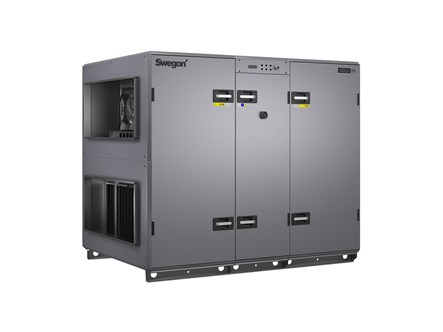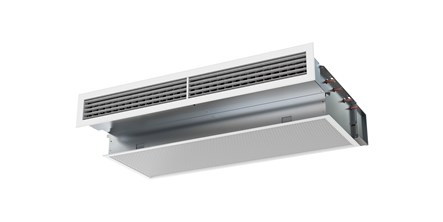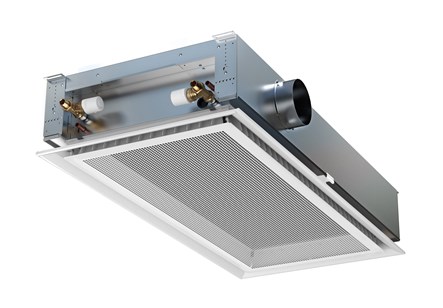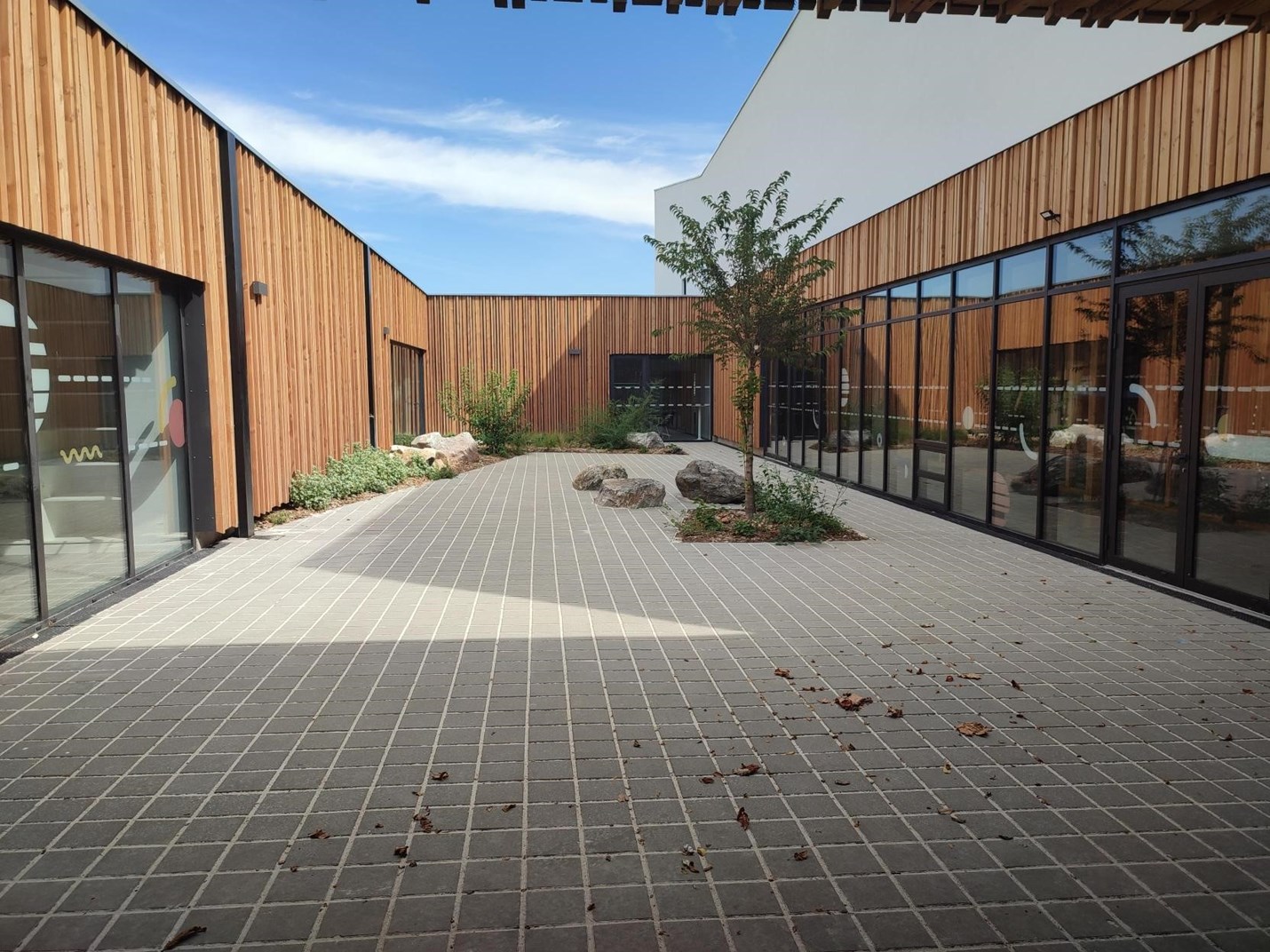
When the requirements varies across the building's many spaces
A community center built from old and new
The Maison de quartier community center in Portet-sur-Garonne, outside of Toulouse in France, was largely destroyed by a violent fire in 2018. It was later decided to renovate the damaged parts of the building and to rebuild destroyed sections to create pleasant indoor environments for association life and cultural events, as well as for sports activities.
The aim was to offer a spacious auditorium with retractable bleachers, multipurpose rooms for all sorts of creativity, dance studios, meeting rooms and offices. It was also planned to complete a large patio around the building in order to bring in natural light.
Indoor spaces in public buildings are equally important
Since people in the Western world spend nearly 90% of their lives indoors, it is important to make sure the indoor climate is safe and that it supports peoples’ ability to perform and feel well. The time spent in an indoor environment like the Maison de quartier could possibly be seen as a snapshot of a person’s life compared to how much time is spent in schools, at work or in peoples’ homes. Some may argue that the indoor climate in a community center is of less importance. We think not.
First of all, these buildings serve as workplaces for some people and they should be able to perform a good job at all times. Further, even though the time spent in an auditorium, in a ballet class or at a bingo session may be relatively short compared to other indoor environments, the ability to experience something that speaks to all senses or to grasp and make use of a lot of information, requires a good indoor climate.
Blog: Sports facilities - the toughest games to win?
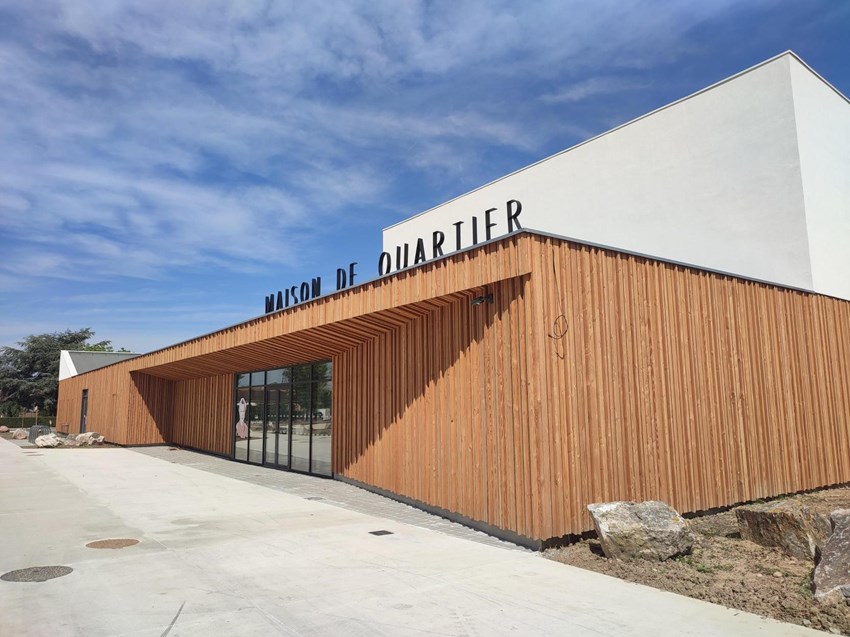
A "green" project
This project was driven by strong ecological and economic ambitions all the way from construction to finishing details. Today the building has a wooden frame with reinforced insulation and a variety of organic and geo-sourced materials have been used throughout the building. Organic materials are for instance wood, hemp, wool and the like, while stone is an example of a geo-sourced material.
In addition, it was decided to provide the building with photovoltaic panels, geothermal energy, air handling units with two directional air flows and a system for demand controlled indoor climate – all focusing on a very low energy requirement.
Changing demands inside is the indoor climate challenge
Community centers, or public buildings overall, are most often intended to accommodate a variety of events and activities throughout the year. Consequently, it’s challenging to predefine specific indoor climate requirements for these spaces. Different activities put different conditions and requirements on temperature, air quality, humidity and more.
Not only do the activities vary over time, but so does the number for people. Few days, weeks or years look the same from an occupancy perspective. That makes it somewhat obvious that operating such building at maximum ventilation capacity and maintaining a constant temperature can be both costly and contradictory to sustainability targets. This is something to carefully consider in the design of indoor climate solutions.
To ensure good air quality
The indoor climate solution for Maison de quartier was designed with four GOLD air handling units (AHUs) of slightly different versions. The AHUs are equipped with heat exchangers which ensure an energy efficient use of the heat or cold in air flowing through the unit. That means that the air handler can work either to heat or chill the supply air.
In addition, the provided units are specified with a ReCO2 function which ensures air quality and temperature when the extract air is allowed to be recycled. When the air is recycled, the intake of outdoor air is limited which makes the operation even more energy efficient.
Learn more about heat exchangers in our guide
Get familiar with our GOLD unitsComfort modules to feel good inside
As said previously in this reference case, it is not clearly stated what the indoor climate needs will be in all parts of the premises at all times. The building has therefore been provided with two kinds of room units for supplying air into each room or space. Both are waterborne units and compatible with our system for a demand controlled indoor climate.
The provided PARAGON units handle ventilation, cooling and heating and are advantageous thanks to its high capacity and low installation height. In fact, this is a product frequently used in hotel rooms, thanks to its low noise – a characteristic that can suit parts of this community center very well. The other product provided is our PARASOL 4-way unit, also utilized for ventilation, cooling and heating. The four air flow directions can be used in any and all combined ways which is the clear advantage in this building where different use-patterns occur.
See all our waterborne products
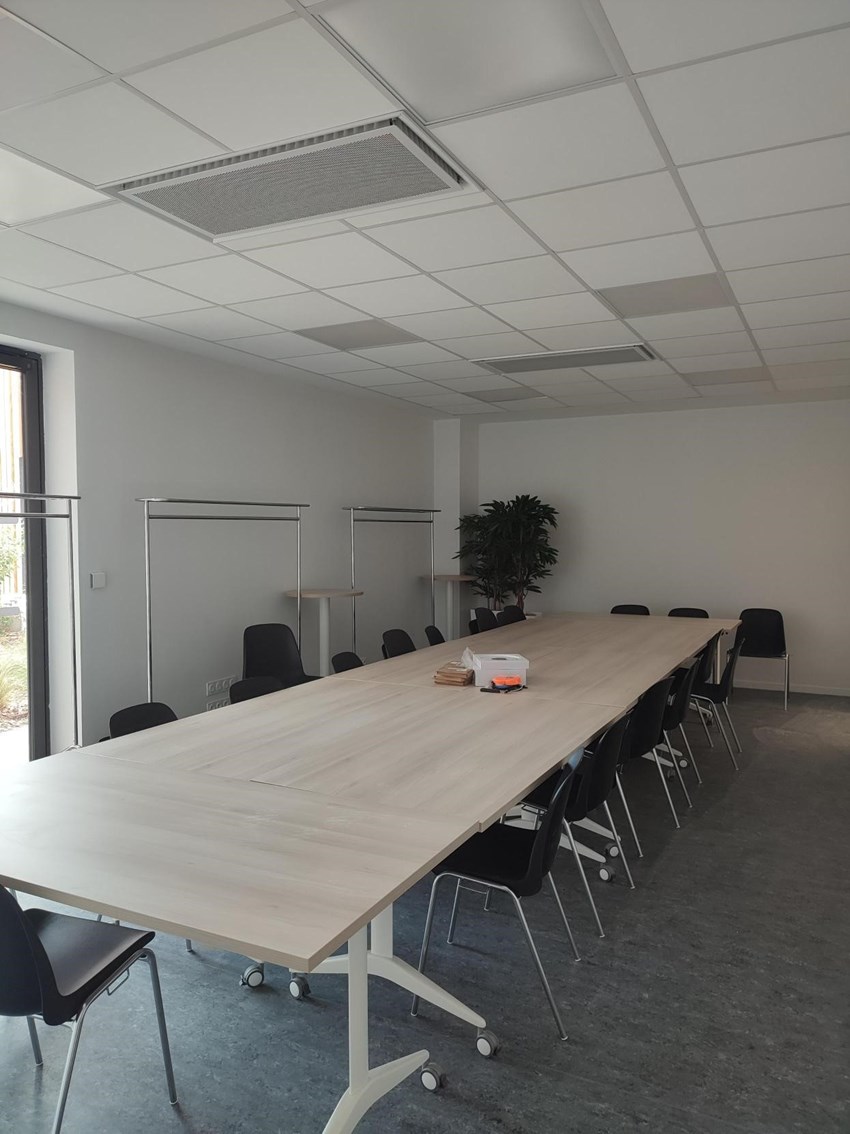
WISE for a demand controlled indoor climate
To address the varying activity and presence at the Maison de quartier community center, we recommend the indoor climate requirements to be met with a system which enables a demand controlled indoor climate (DCV). Our WISE system adjusts the indoor climate to the actual needs, and provides optimal comfort in combination with energy efficiency, flexibility and sustainability.
WISE monitors and adjusts according to a wide range of sensor data, including temperature, air quality, humidity and occupancy. The system is then able to control essentially all elements in a climate system, from air handling units to climate products for instance. Additionally, WISE can control water and air optimization to ensure a comfortable and sustainable indoor climate.
Products
Here is a selection of the products provided in this project
